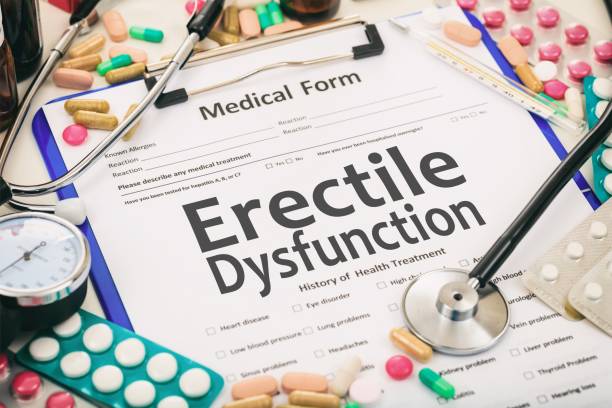It has been discovered that there is a substantial overlap between the two seemingly unrelated medical disorders of erectile dysfunction (ED) and cardiovascular diseases (CVD). Although one is related to heart health and the other to sexual health, new research has shown that the two are strongly correlated. Recognizing this connection is essential for both assessing potential cardiovascular risks and enhancing men’s sexual health. This essay explores the complex connection between heart health and erectile dysfunction, emphasizing the value of early intervention and holistic health strategies.
The Cardiovascular System and Erection Physiology
The physiology of the cardiovascular system and erections are fundamental to understanding the relationship between ED and CVD. Blood flow to the penis increases during an erection, making it rigid. A functioning cardiovascular system is essential to this process. Blood is pumped by the heart through arteries, and ED can result when these arteries are obstructed or narrowed because of diseases like atherosclerosis (hardening of the arteries).
Shared Risk Factors
Several risk factors are common to both ED and CVD, emphasizing their intertwined nature:
1. Age: Men are more likely to develop CVD and ED as they get older. The blood vessels and arteries can become less flexible and narrower, affecting blood flow throughout the body.
2. Obesity: Excess weight can lead to conditions like diabetes and high blood pressure, which are known contributors to ED and CVD.
3. Smoking: Tobacco use damages blood vessels and restricts blood flow, adversely affecting both heart health and erectile function.
4. High Cholesterol: Elevated levels of cholesterol can lead to plaque buildup in arteries, reducing blood flow and increasing the risk of both conditions.
5. Hypertension: High blood pressure puts strain on the cardiovascular system and can impair blood flow to the penis.
The Role of Endothelial Dysfunction
Endothelial cells line the inside of blood vessels and play a crucial role in regulating vascular function. Endothelial dysfunction, characterized by reduced nitric oxide production and increased inflammation, is a common precursor to both ED and CVD. Nitric oxide is essential for vasodilation, the process by which blood vessels widen to allow increased blood flow. When endothelial function is compromised, it can lead to reduced blood flow to the penis and impaired erectile function. Moreover, endothelial dysfunction is an early marker of atherosclerosis, highlighting its significance in predicting cardiovascular risks.
Early Detection and Prevention
Given the shared risk factors and underlying vascular issues, ED can serve as an early warning sign of cardiovascular disease. Men experiencing ED should consider it a potential indicator of broader cardiovascular health issues and seek medical evaluation. Conversely, addressing cardiovascular risk factors can improve erectile function and overall sexual health.
Regular cardiovascular screenings, including blood pressure checks, cholesterol tests, and assessments of blood glucose levels, are essential for early detection of CVD risk factors. Lifestyle modifications such as maintaining a healthy weight, engaging in regular physical activity, quitting smoking, and adopting a balanced diet can significantly reduce the risk of both ED and CVD. Additionally, medications like statins and antihypertensives can help manage cholesterol levels and blood pressure, thereby improving vascular health and erectile function.
Holistic Approach to Health
Recognizing the link between heart health and erectile dysfunction underscores the importance of a holistic approach to men’s health. Rather than treating ED and CVD as isolated conditions, healthcare providers should consider them manifestations of broader vascular issues. A comprehensive treatment plan that addresses underlying cardiovascular risk factors can yield better outcomes for both sexual and cardiovascular health.
Furthermore, psychological factors like stress, anxiety, and depression often accompany ED and CVD. These mental health issues can exacerbate vascular problems and impede treatment success. Thus, integrating psychological support and counseling into the treatment plan can be beneficial for overall well-being and treatment efficacy.
Results
In conclusion, the link between heart health and erectile dysfunction is undeniable, rooted in shared risk factors, vascular issues, and physiological mechanisms. Recognizing this connection can lead to early detection of cardiovascular disease and improved management of both conditions. A holistic approach that addresses lifestyle factors, cardiovascular risk factors, and psychological well-being is crucial for optimizing men’s sexual and cardiovascular health. By understanding and addressing the interplay between ED and CVD, healthcare providers and individuals can work together to enhance overall health and quality of life.
